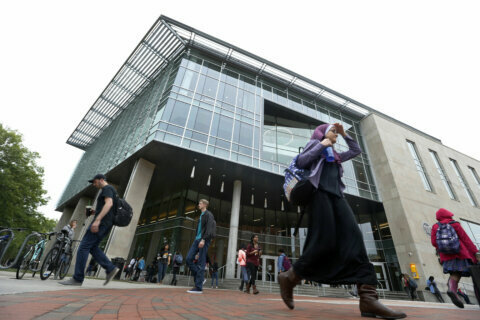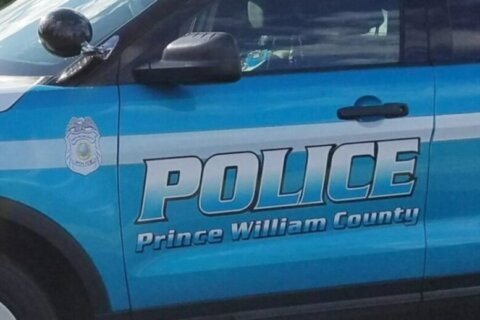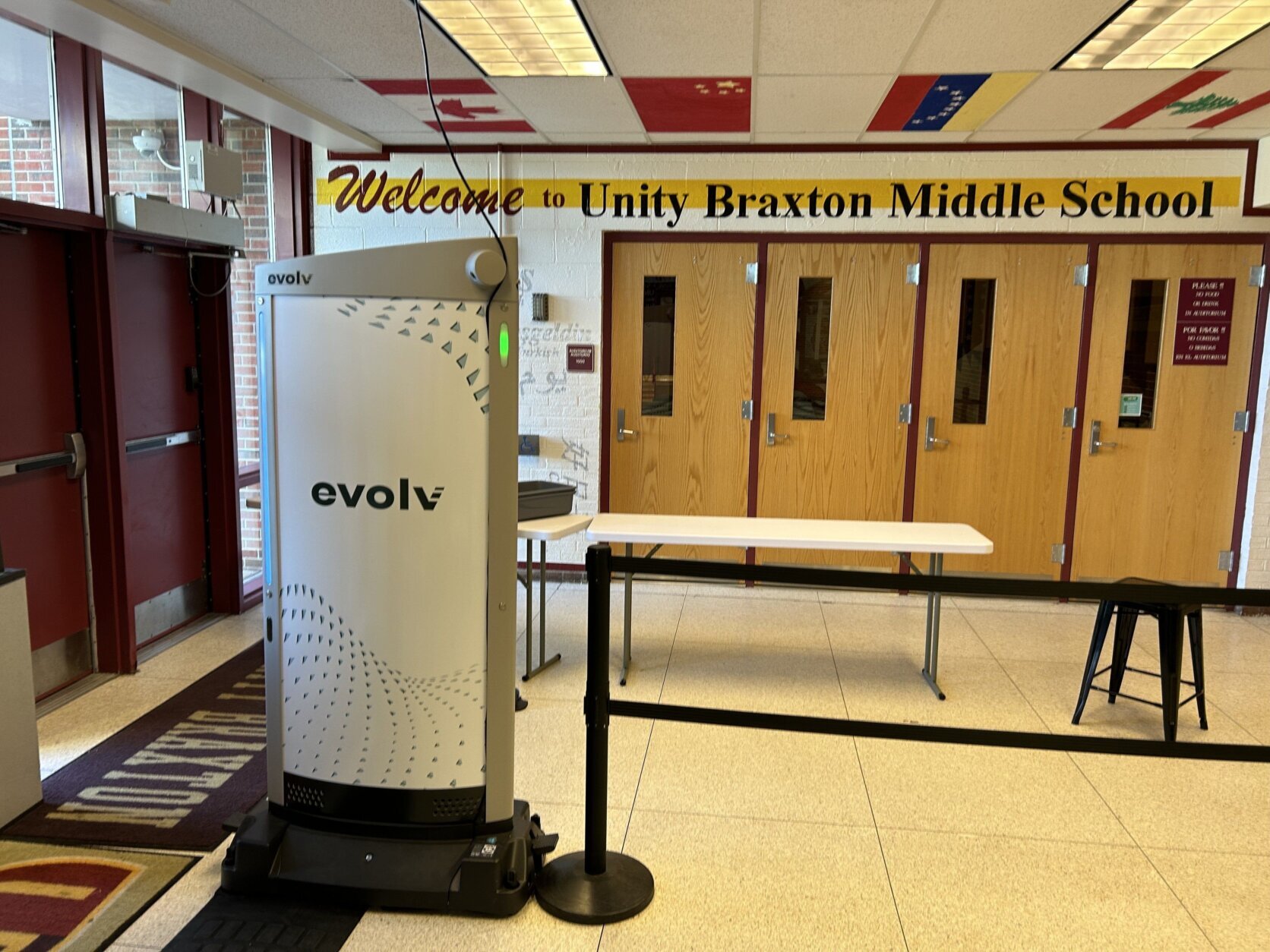
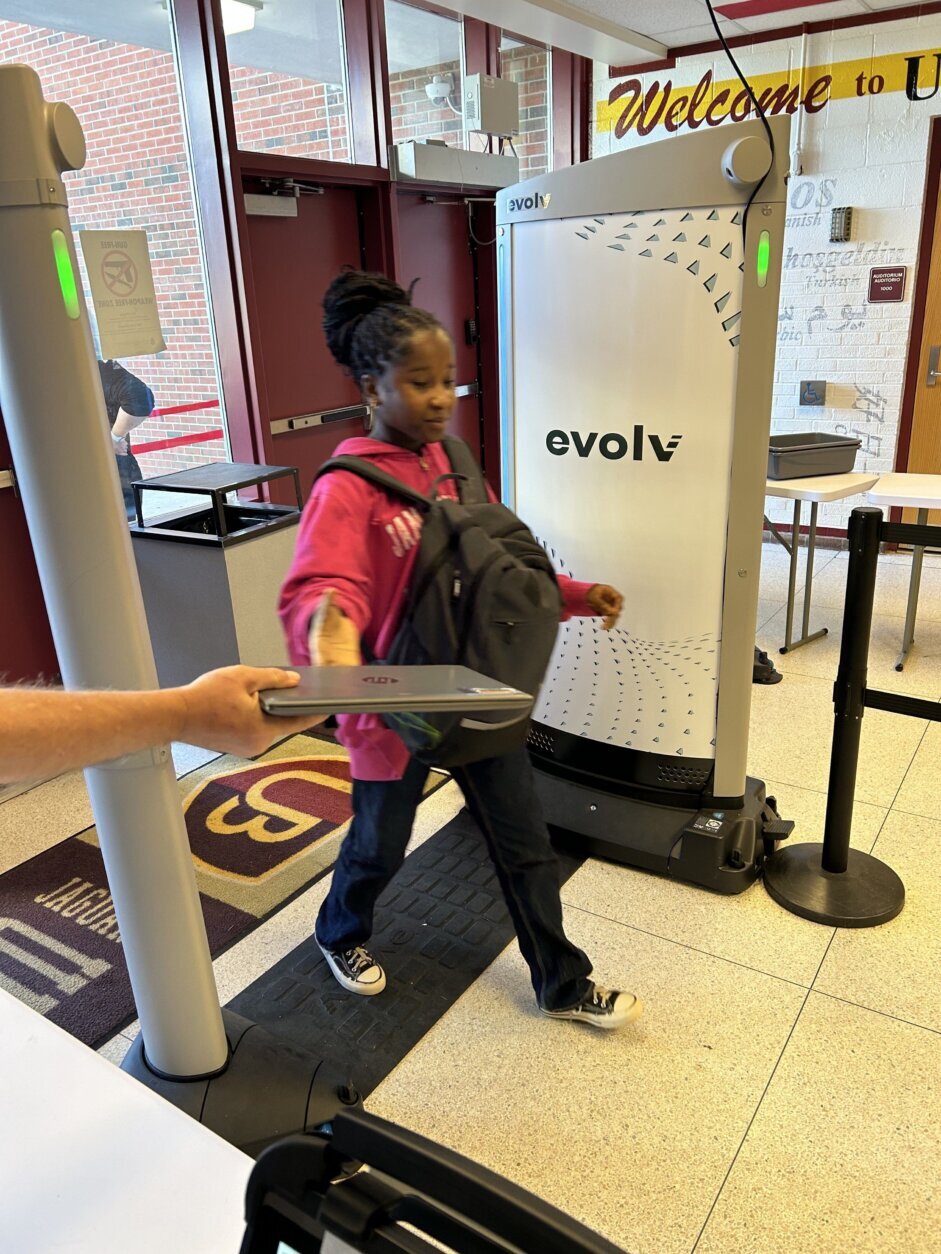
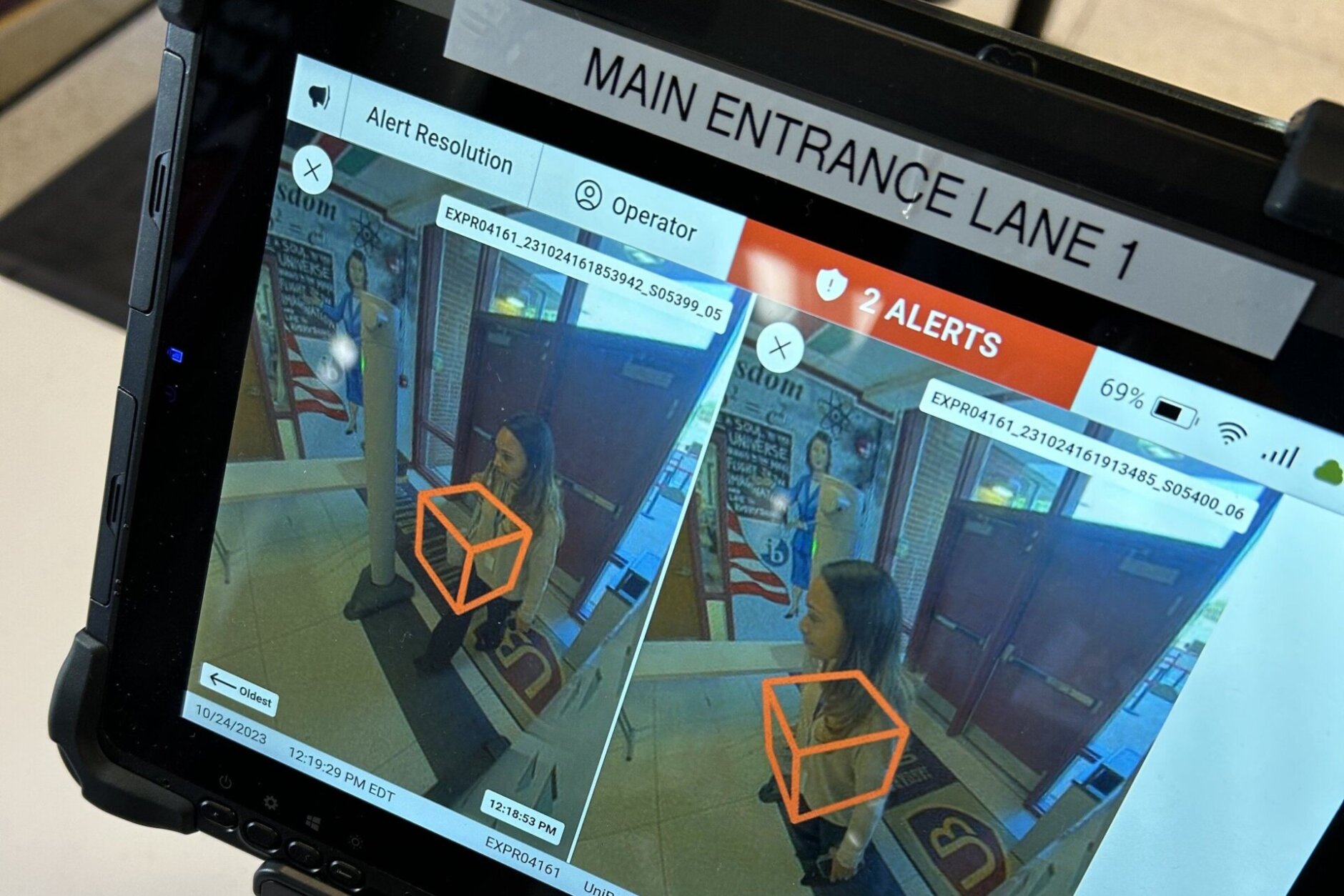
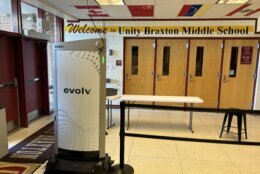
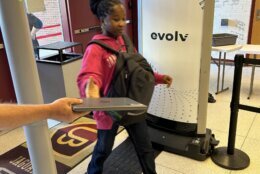
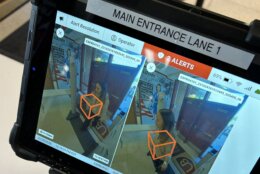
Every morning, teachers, administrators and over 1,000 students at Unity Braxton Middle School in Manassas, Virginia, walk through a weapon-detecting security scanner, as part of a new, countywide security initiative this school year.
To get prepared, Principal Mary Jane Boynton said, students had the chance to walk through the system before the school started using it, getting familiar with the noises it makes and how the process would work. They learned about the types of things that might set the device off, and heard about best practices, so there wouldn’t be a delay in getting students to class on time.
Now, the weapons-detecting software has been in place for about two weeks, and staff and students said the technology assures them they’ll be safe in the school’s buildings. Even if the device beeps, the process takes just seconds, Boynton said, ensuring students aren’t missing class time.
The process also makes school safer, teacher Eugene Sloane said, because there’s less downtime in the morning and fewer students roaming around campus. Plus, there’s not a crowd of students trying to rush into the building, largely because school leaders created a designated pathway for students to enter the building.
Prince William County Public Schools, the state’s second-largest school division, is one of several D.C.-area school systems using weapon detectors to keep students and faculty safe. It’s part of a nearly $11 million investment over four years that the school board approved.
In Prince William, the tech is in place at 35 middle, high, and K-8 schools, a spokesperson said.
“It’s not TSA,” said physical education teacher Eduardo Garcia. “It looks like it, but it’s not the same kind of system. It’s really just a matter of making sure we’re safe.”
As students walk through the Evolv scanners, which use artificial intelligence to identify weapons or items that present like them, they hand staff members any devices that could set off an alarm.
Those include things such as umbrellas, laptops, binders, deodorant bottles or eyeglass cases, Boynton said. When an item gets flagged, a screen shows staff exactly where it’s located.
Then, an administrator uses a wand to check the area the system flagged. In total, Sloane said it’s a seconds-long process, even if a student has to step aside.
“It’s not an evasive system,” Garcia said. “We’re not searching kids. It’s really there for safety. And then that way, we can focus on what we’re here for, which is to educate and get an education.”
The process involves about a dozen school staff members, Garcia said, and school leaders meet regularly to learn more about the items that get flagged. So far this year, Unity Braxton has reported a 2% alert rate.
The countywide results have been promising too, the spokesperson said, but a pocket knife was identified and confiscated at Garfield High School earlier this month.
Shaniya, who’s an eighth grader at the school, said early student concerns that the process would slow them down entering the building have been eased. It’s more beneficial than putting belongings in lockers, which students did last year, she said, adding the scanners are “a good step for making sure safety is taken seriously.”
Community and teacher feedback have also been positive, Boynton said.
“(Teachers) feel that this system, they don’t have to worry about what’s in somebody’s backpack,” Sloane said. “They don’t have to worry about what’s in somebody’s locker. They know they’ve gone through the system and whatever they have on them cannot hurt them or any other student in the building.”
Alexandria City Public Schools has also used weapon detectors this school year. There, school officials said they’ve identified items like a knife, taser and razor blade. In April, Fairfax County Public Schools Superintendent Michelle Reid said the county was considering a weapons screening system.
“It’s simple, it’s easy, and it’s keeping your kids safe,” Sloane said.


